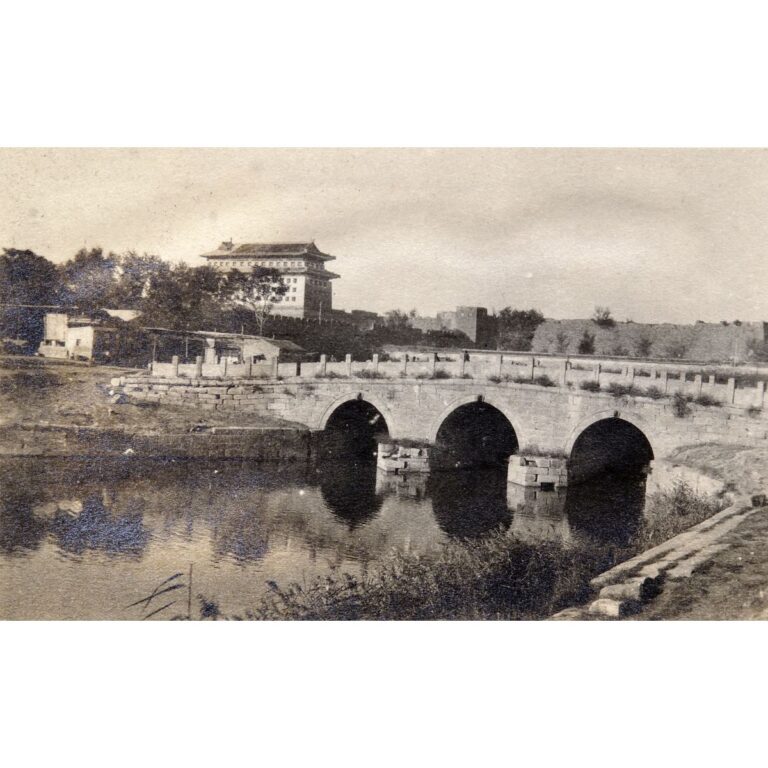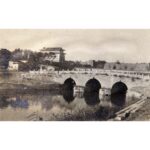Photography Bridge in the Beijing Outer City Quarters
A black-and-white photograph showing the area outside Beijing’s city walls, known as the Outer City 外城. This was where the Han Chinese population lived. It was a world completely separate from the other two parts of Beijing, with theatres, restaurants, majiang 麻將 casinos, opium smokehouses, various street fairs, and markets. In the foreground is a three-arch bridge, called the “Bridge of Water Spirits” in the manual photo inventory. In the background is the southeastern fort on the city wall. This part of the wall dates back to the Ming Dynasty (1368–1644). After 1911, the fortifications were gradually demolished. Thus, this section of the wall and the fort are one of the few parts of the old city wall that remain today. Together with the section of the city wall next to Chongwen Gate (Chongwenmen 崇文門), they now form the Ming Dynasty City Wall Remains Park (Beijing Ming Chengqiang Yizhi Gongyuan 北京明城牆遺址公園), which was completely renovated ... more
A black-and-white photograph showing the area outside Beijing’s city walls, known as the Outer City 外城. This was where the Han Chinese population lived. It was a world completely separate from the other two parts of Beijing, with theatres, restaurants, majiang 麻將 casinos, opium smokehouses, various street fairs, and markets. In the foreground is a three-arch bridge, called the “Bridge of Water Spirits” in the manual photo inventory. In the background is the southeastern fort on the city wall. This part of the wall dates back to the Ming Dynasty (1368–1644). After 1911, the fortifications were gradually demolished. Thus, this section of the wall and the fort are one of the few parts of the old city wall that remain today. Together with the section of the city wall next to Chongwen Gate (Chongwenmen 崇文門), they now form the Ming Dynasty City Wall Remains Park (Beijing Ming Chengqiang Yizhi Gongyuan 北京明城牆遺址公園), which was completely renovated in 2004.
The photograph is the 101st of 449 photographs of Beijing and its surroundings in the album of Ivan Skušek Jr., purchased during his stay in Beijing (1914–1920). In the handwritten inventory of the album, the photograph is referred to as Brücke der Wassergeister. (DZ, MV)





































Do you have a comment or additional information about the subject?